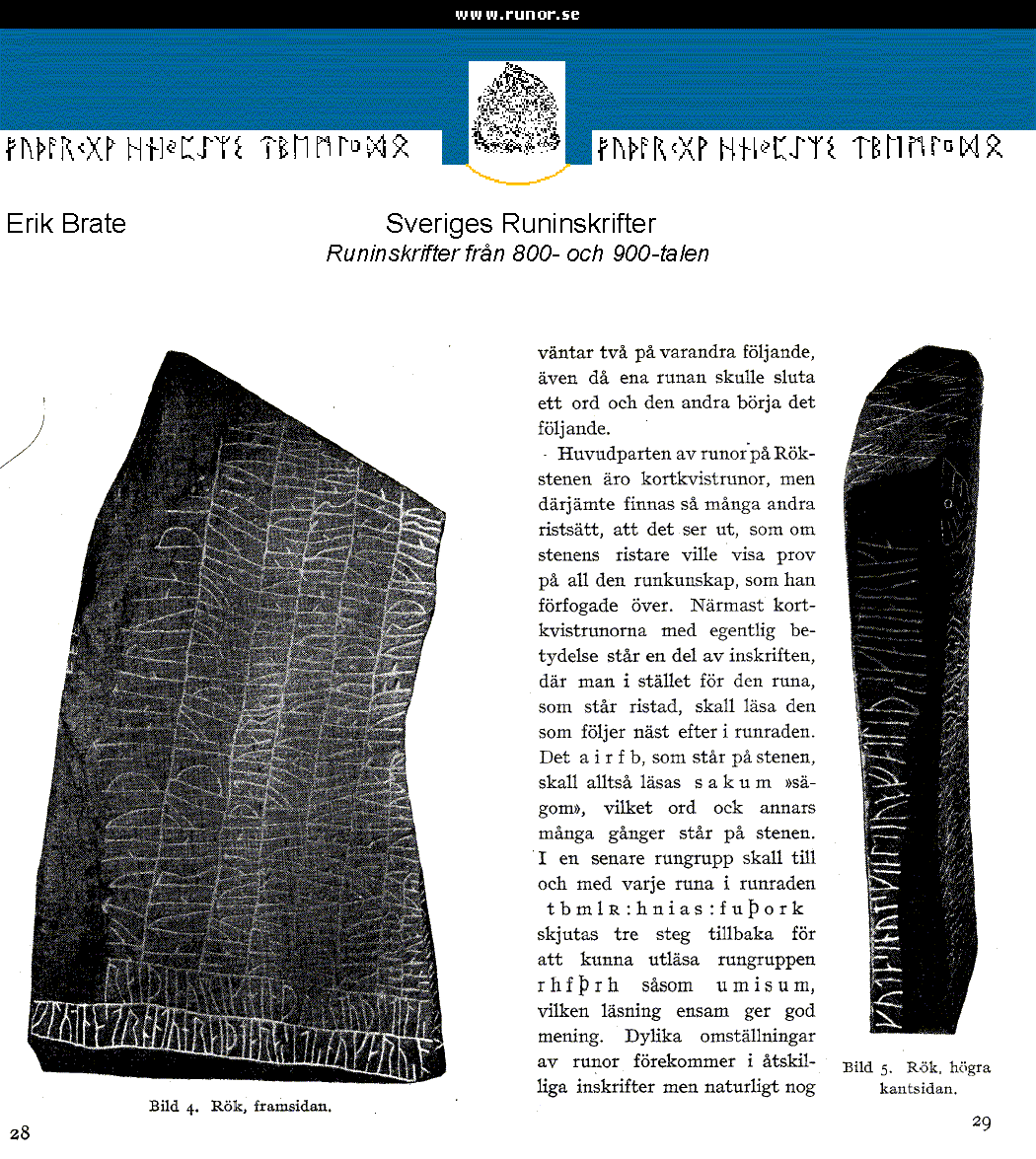
expect two consecutive, even when one rune would
conclude a word and the second start the following word.
Most of the runes on the Rök-stone are short-twig runes, but also have so many other way of carving,
that it looks as if the stone carver wanted to show all his knowledge of runic carving,
which he possessed.
Nearest short-twig runes with real content is a part of the inscription, which, instead of the rune,
which is carved, should read the following rune in the runic alphabet.
The "airfb", standing on the stone, must therefore be read sakuma »to say»,
which words are also many times on the stone.
In a subsequent rune-group is up to each rune in the runic alphabet tbmlR: hnias:
fuþork suspended three steps back for deducing the following rune-group "rhfþrh" as umisum,
the reading alone gives a good sense.
Such conversions of runes appears in numerous inscriptions, but naturally
Picture 5. Rök, right edge of the stone.